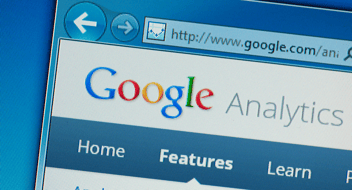Sales funnels Vs customer journey maps: What you need to know

If you ever tried your hand at promoting your brand with digital marketing strategies, you would have most probably heard terms like ‘sales funnels’ and ‘customer journey.’
Maybe you know what these terms mean or maybe you don’t. Maybe you thought these concepts mean the same thing because you’ve heard them used interchangeably in the past.
Nevertheless, one thing you should know is that these concepts can come in very handy when you’re trying to put your name out there and build a loyal customer base.
So, here’s a quick look at what each of these concepts means, how they are different from each other, and how you can use them to attract more leads, get more conversions, and build lasting relationships with your customers.
What are sales funnels?
The concept of sales funnels has been around for a while and it remains one of the simplest and most effective ways to land customers.
In very simple terms, a sales funnel leverages paid, owned, and earned channels such as websites, Facebook pages, paid ads, and third-party reviews to engage with your leads and that pushes them to take a specific action.
It can be a funnel that pushes users to sign up for a newsletter, book a demo or consultation or push them to buy your products or services, with the ultimate goal of turning them into paying customers.
There are various models of sales funnels that have different phases. For instance, the AIDA model has 4 phases; awareness, interest, desire, and action.
That said, modern sales funnels also include phases after the leads become customers. Typically, this includes the retention phase and the advocacy phase.
As the leads pass through the funnel, it signifies a deeper connection with the brand and they will become loyal customers and advocates for your brand.
Leads can be fed into a sales funnel through various different means such as paid ads, social media posts, organic search results, and SEO.
What are customer journey maps?
To understand what customer journey maps are, it’s important to know what a customer journey is. It simply means the whole lifecycle of a customer, from them becoming aware of your brand to becoming a regular user of your product or service.
Customer journey maps are a visual representation of all the interactions a customer has with your brand at every stage of their customer journey.
It helps you understand what steps a typical customer takes before becoming a customer, where they are most attracted to your brand, and their behaviours, feelings, and emotions and improve the customer experience.
Customer journey maps can be very straightforward or complex depending on your overall marketing strategy.
By providing you with detailed insights into customer expectations, behaviour, and actions at every stage of the customer journey, customer journey maps can help you make more informed marketing decisions to ensure that your customers keep coming back to do business with you.
So, the main difference between a sales funnel and a customer journey map is that the sales funnel is like a processing plant that turns leads into customers while the customer journey map represents all the interactions they had with you during the path to becoming a customer.
How to use customer journey maps and sales funnels for better marketing returns?
There’s a very sound case for why you should be using customer journey maps and sales funnels together.
Most businesses use sales funnels, but on their own, they are inward-looking. There’s little to no consideration given to customer preferences, emotions, and behaviour. Customer journey maps, on the other hand, are outward-looking and prioritise the customer experience.
This is where a customer journey map can augment your sales funnel. By giving you insights into how leads act and react to various marketing strategies, they can help you improve your sales funnels, reduce leaks, and maximise conversions.
For instance, something as simple as how leads coming from different marketing channels interact with your brand can help you customise your sales funnel to suit those leads.
If you’re looking to leverage customer journey maps for your strategies, you should target specific customer segments and build different journey maps for each of the segments. You can build journey maps based on:
- Marketing channels
- Target persona
- Geographical region and more
Once you get the insights from your journey maps, you can go about rebuilding your sales funnel.
So, what’s the takeaway?
Simple. Use customer journey maps and sales funnels in conjunction to get the best results from your marketing campaigns.
Just remember to evaluate what channels and assets are driving conversions across your customer journeys and sales funnels and optimise accordingly to maximise your returns.
Good luck 😉



